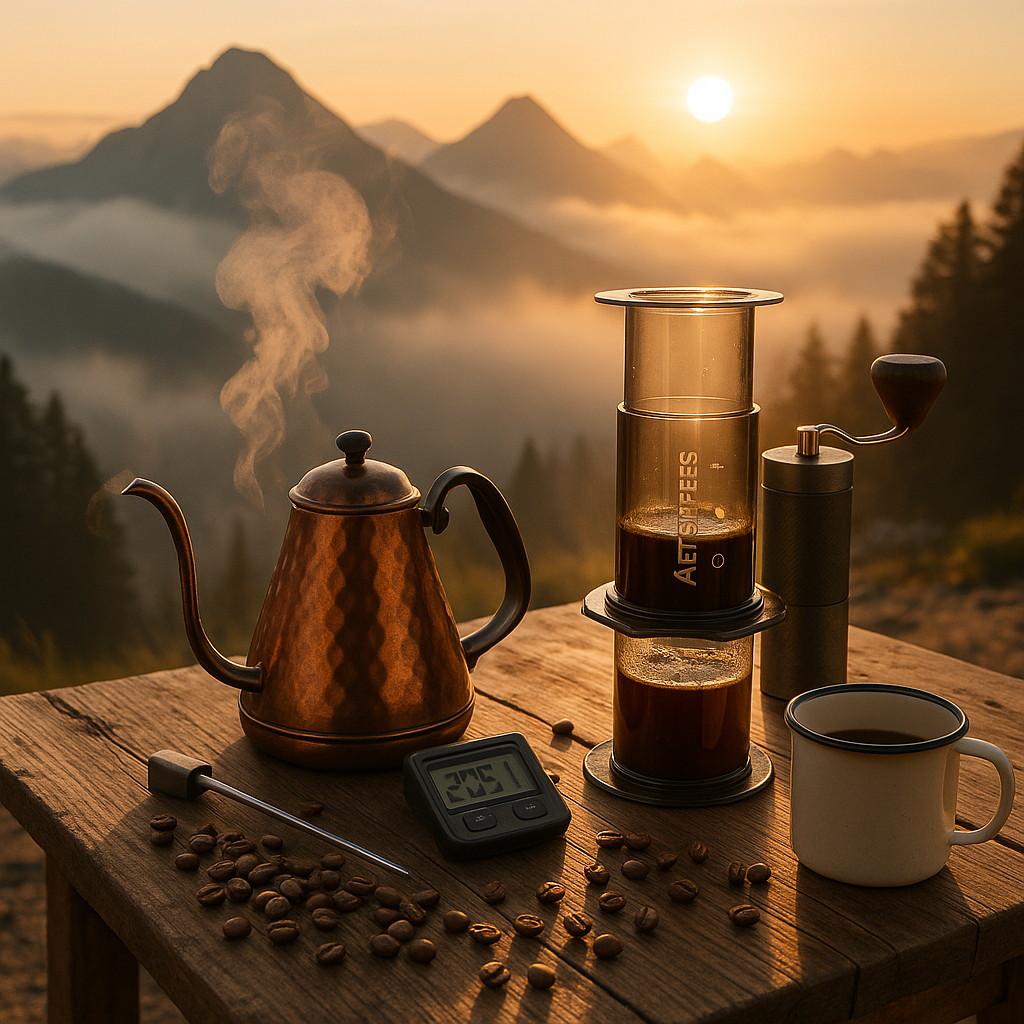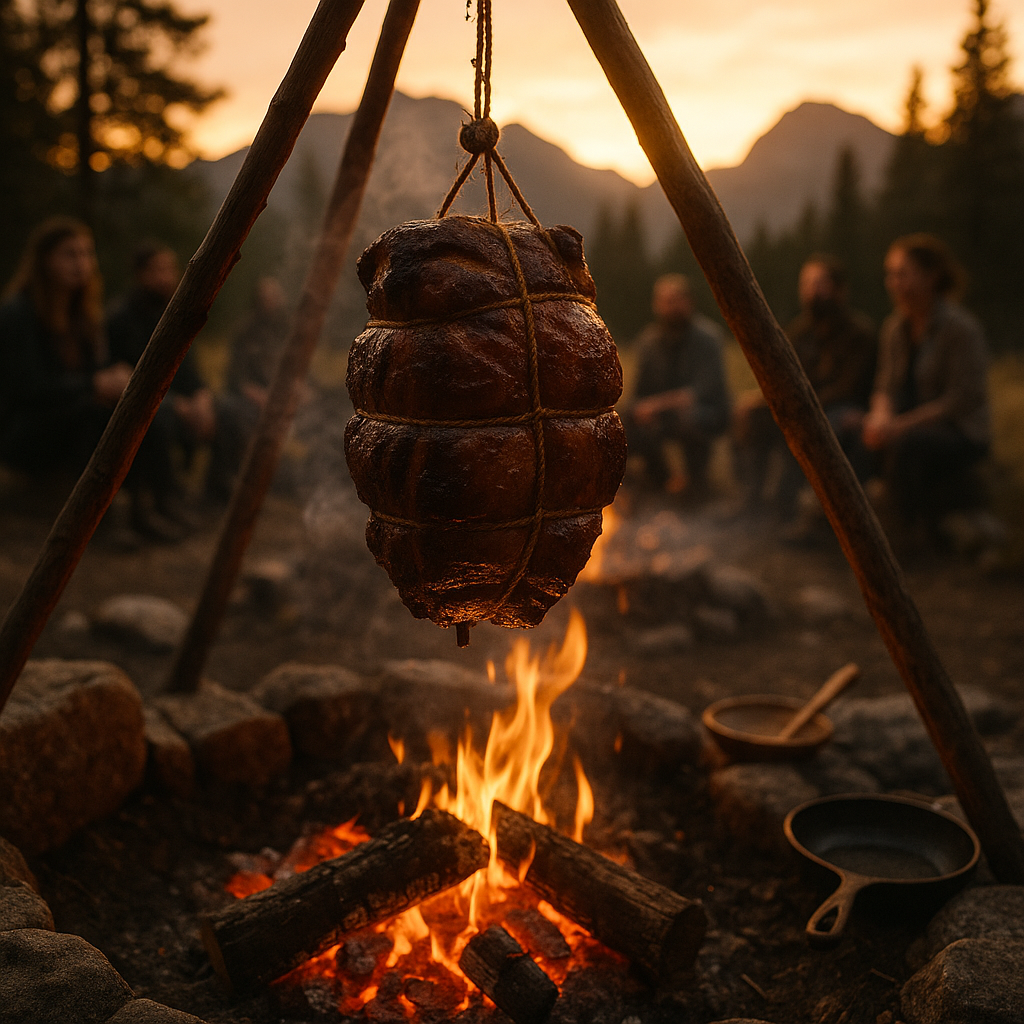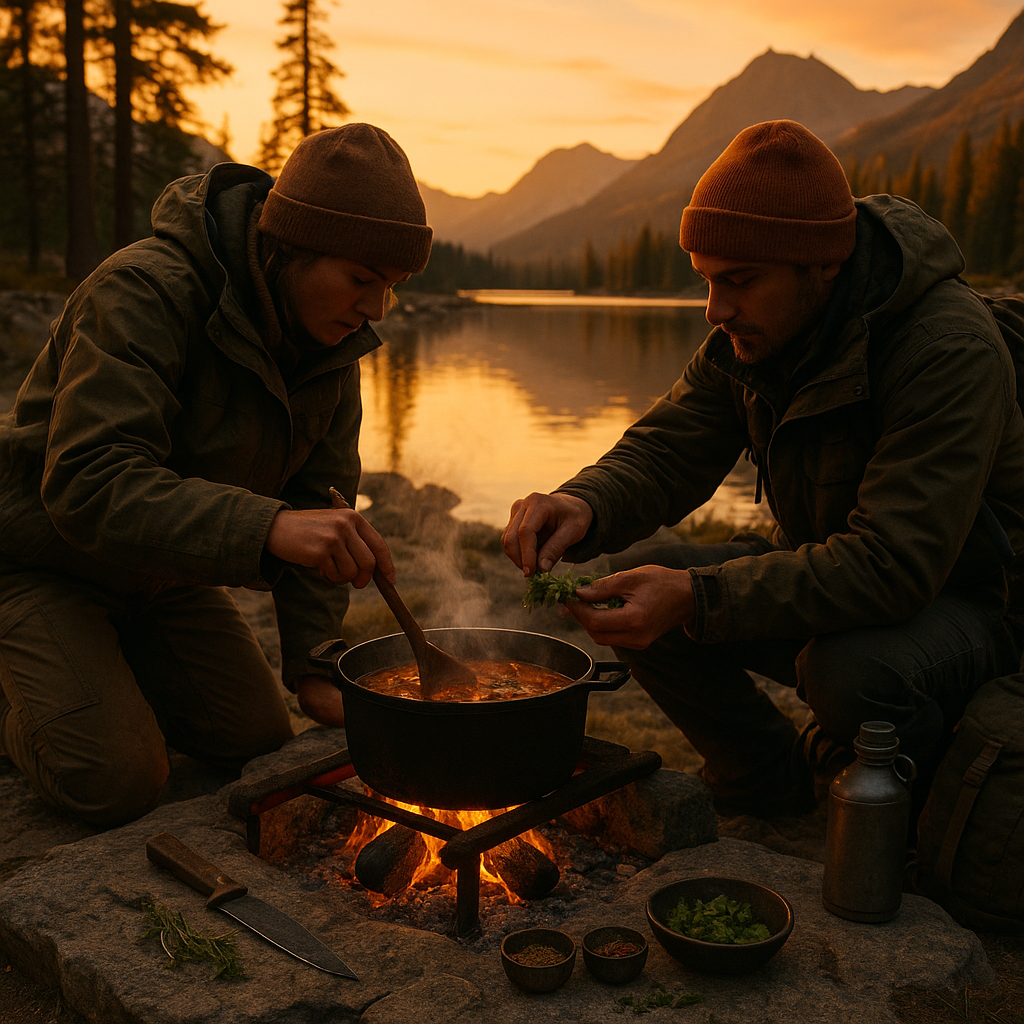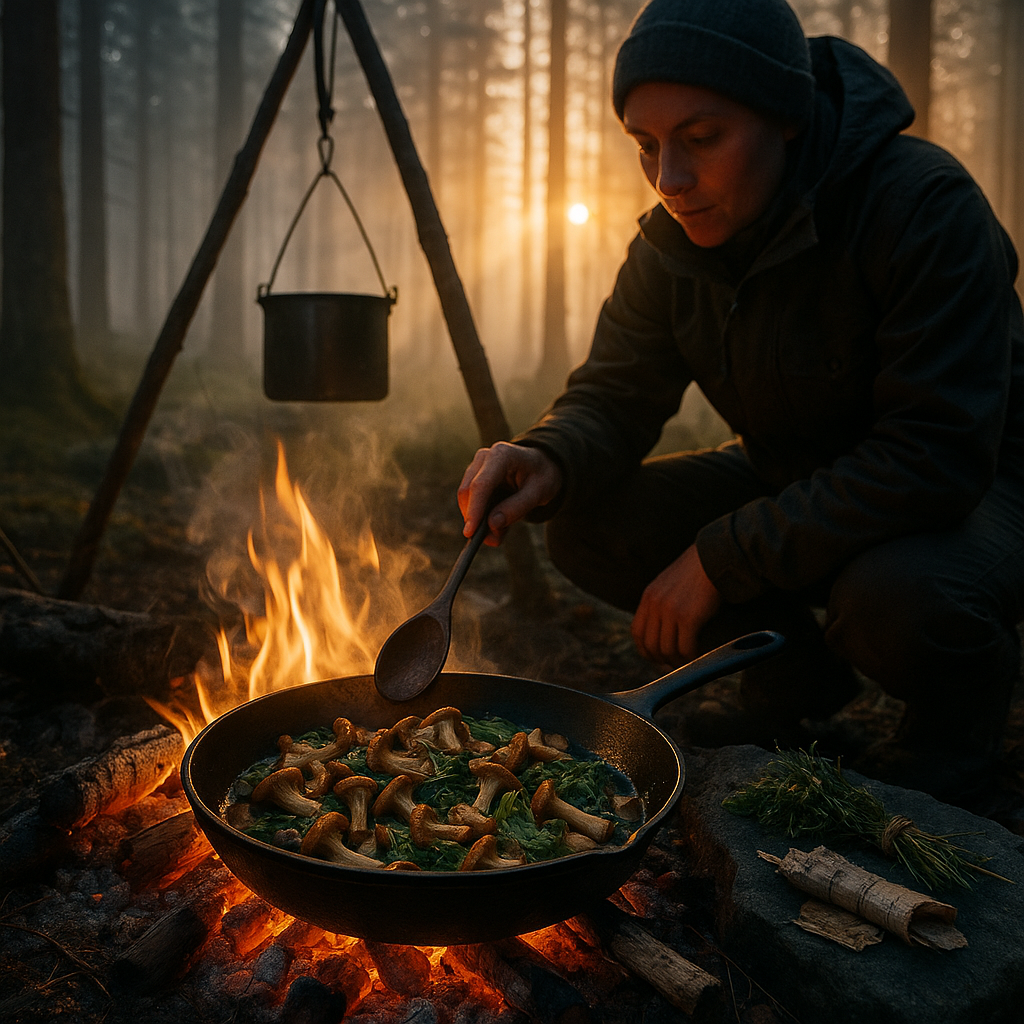Key Takeaways
- Leverage lower boiling points for unique flavor extraction: At higher elevations, water boils at lower temperatures. This adjustment can reveal delicate tea flavors and highlight subtle coffee notes that may remain hidden at sea level.
- Adapt brewing temperatures to prevent under-extraction: Adjust brewing techniques to accommodate water boiling below the ideal range. This tweak ensures proper flavor development while avoiding bitterness in both coffee and tea.
- Extend brew times for balanced extractions: Longer brewing times compensate for lower temperatures, allowing richer flavor extraction. This is especially important for immersion methods such as the French press or for teas with complex profiles.
- Choose equipment suited for altitude brewing: Opt for brewing tools like manual pour-overs or AeroPress. These allow precise control over temperature and timing, which are essential in the mountains.
- Master temperature control for consistent results: Use a thermometer or temperature-controlled kettle to maintain water within the optimal range for your chosen brew method, ensuring each cup reaches its full flavor potential.
- Consider the altitude when steeping tea: At higher elevations, nuanced tea aromas emerge, but you must adjust steeping times for the lower boiling point. This helps avoid weak or bitter cups and lets the tea’s unique character shine.
- Maximize efficiency with lightweight travel gear: Compact, portable brewing systems make it easy to craft exceptional coffee and tea during mountain hikes or camping adventures, ensuring you enjoy quality without compromise.
- Understand the science of atmospheric pressure and brewing: Lower atmospheric pressure influences water’s heat retention and extraction rates. This knowledge is key to modifying traditional techniques for optimal results, leading to uniquely satisfying mountain brews.
High-altitude brewing isn’t just about overcoming setbacks; it’s about embracing the science of elevated environments to create taste experiences you simply can’t find at sea level. With curiosity and attention to detail, every mountain pour can become an unforgettable story in your cup.
Introduction
Picture dawn breaking on a mountain ridge, the air crisp with pine and promise. In this breathtaking light, a simmering kettle boils quickly, not with the roaring heat of the coast, but with subtle urgency born of altitude. High above the ordinary, every brew becomes an experiment shaped by atmospheric pressure and the shifting point at which water dances into steam.
In these elevated realms, brewing coffee or tea is more than a routine. It’s an act of adaptation and wonder. Lower boiling points and thinner air demand new rituals, inviting you to tweak your grind, draw out the steep, and become meticulous with each degree of heat. Here, even a humble mug on a trail transforms into a reflection of place, weather, and artistry.
Let’s wander through the essentials of brewing in thin air, from mountain coffee to high-elevation teas, guided by both scientific principles and the spirit of exploration. Your next wilderness pour awaits far beyond the familiar shoreline, up where the clouds gather and the flavors take flight.
Stay Sharp. Stay Ahead.
Join our Telegram Channel for exclusive content, real insights,
engage with us and other members and get access to
insider updates, early news and top insights.
 Join the Channel
Join the Channel
The Science of High-Altitude Brewing
Understanding how altitude interacts with water chemistry and brew methods is the first step toward mountain mastery. This scientific lens shapes every aspect of your cup, from aroma to aftertaste.
Understanding Altitude’s Impact on Water
At higher elevations, decreasing atmospheric pressure measurably lowers water’s boiling point. For every 1,000 feet you ascend, water’s boiling point falls by about 1°F (0.5°C). That means a kettle at 10,000 feet will boil at roughly 194°F (90°C), not the robust 212°F (100°C) of sea level.
This gentle simmer reshapes your brewing experience by:
- Limiting the maximum water temperature available
- Causing water to evaporate more quickly
- Altering extraction dynamics and volatile flavor compounds
- Affecting dissolved oxygen content, which can subtly change how flavors develop
These shifts can feel challenging, yet they uncover opportunities for nuance. Lower atmospheric pressure allows delicate aromatics to bloom, making lighter teas brighter and gentle coffee notes more expressive.
Temperature Compensation Techniques
Brewing well in the mountains means learning to adjust for this loss of heat. Several strategies ensure your beverages remain vibrant and balanced:
-
Extend Brewing Time
Lengthen your steep time by 15–30 seconds for every 1,000 feet of elevation gained. Watch flavor development closely and use temperature-stable equipment whenever possible to reduce rapid cooling. -
Modify Grind Size
For coffee, select a slightly finer grind. This increases the surface area, helping the lower-temperature water extract a full spectrum of flavors. For tea, gently break apart larger leaves to speed extraction at the lower heat.
Extraction Dynamics at Elevation
The mountain air crafts an environment ripe for flavor. Instead of fighting the reduced temperature, savvy brewers let it guide the cup’s character.
Green Tea:
- Less chance of scorching leaves preserves floral and vegetal notes
- Catechins (responsible for mouthfeel and antioxidant power) remain intact
- More pronounced umami qualities
Light Roast Coffee:
- Acidity shines with clarity, framing citrus and floral flavors
- Bitterness is diminished, letting nuanced notes come forward
- Lively, clean aftertaste that’s both refreshing and complex
In the same way, adjusting for altitude reveals character in herbal tisanes or black teas, often highlighting regional terroir and hidden spice notes.
Equipment and Tools for Mountain Brewing
The right equipment transforms mountain brewing from struggle to celebration. Choosing gear that addresses heat retention and pressure makes every pour more thoughtful and rewarding.
Essential Gear Modifications
-
Insulated Brewing Vessels
Double-walled containers are essential for keeping water hot longer, especially when wind or chilly mornings threaten your temperature. Prepare them with a rinse of hot water before brewing to maintain stability. Choose wider mouths for easier pouring and quicker infusions. -
Pressure-Managing Devices
- The AeroPress excels at high altitudes, providing pressure-based extraction and control, even when boiling points dip.
- French presses can be adapted by plunging slowly and after extended steeping, preventing over-agitation.
- Moka pots need slightly less water and adjusted grind sizes, as steam pressure shifts with altitude.
These considerations also apply to portable espresso makers and advanced camping setups, ensuring you aren’t limited by elevation.
Temperature Control Solutions
Precision is key in the high country. These tools make the difference between a flat cup and one that sings:
- Digital Thermometers: A must-have for checking water at key intervals.
- Insulated Drip Kettles: Protect temperature during slow pours for manual methods.
- Heat-Retention Mats: Placing your vessel on an insulated pad helps minimize heat loss during extraction.
Similar temperature control technologies support brewing excellence across other industries as well. Laboratories, health clinics, and specialty manufacturing all rely on meticulous heat management to ensure consistency and repeatable outcomes.
Advanced Brewing Techniques
Elevated brewing isn’t just about adjusting time or temperature. It’s about tuning every variable to your environment.
Water Chemistry Adjustments
The interplay of minerals in your water can subtly magnify or mask mountain flavors.
-
Mineral Balance
Slightly increase magnesium and calcium levels to aid extraction. Specialty mineral packets, like Third Wave Water, help ensure consistency regardless of your water source, a practice mirrored in food manufacturing or scientific labs seeking pure, repeatable results. -
pH Considerations
Track and fine-tune pH to balance acidity, especially at altitude. Pocket pH meters or buffer solutions can be invaluable for connoisseurs. This level of attention finds echoes in environmental sciences and wine production, where altitude often shapes the acidity profile and resulting taste.
Ratio Refinements
Brew ratios at altitude need adjustment. What works on the coast can yield thin, sour cups in the mountains.
Stay Sharp. Stay Ahead.
Join our Telegram Channel for exclusive content, real insights,
engage with us and other members and get access to
insider updates, early news and top insights.
 Join the Channel
Join the Channel
Coffee:
- Use an extra 1–2 grams of grounds per 100 ml water
- Extend bloom time by up to 30 seconds to ensure full saturation
- Experiment with multiple, smaller pours for pour-over techniques
Tea:
- Add 0.5–1 gram of tea per cup once above 8,000 feet
- Let the first steep run 30–45 seconds longer for depth
- Try successive short steeps to accentuate evolving flavors
Applying these advanced techniques isn’t limited to adventurers. Precision brewing has inspired breakthroughs in other fields, from pharmaceutical extraction processes to flavor optimization in culinary arts.
Real-World Applications Across Industries
While high-altitude brewing has become a signature of adventurous travel, its principles echo across diverse





Leave a Reply